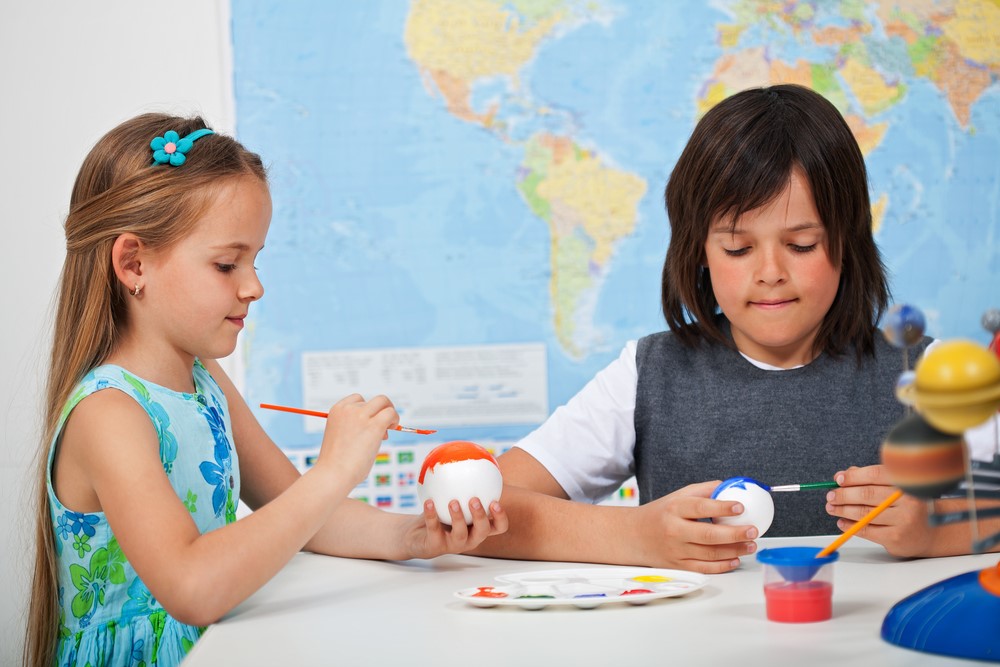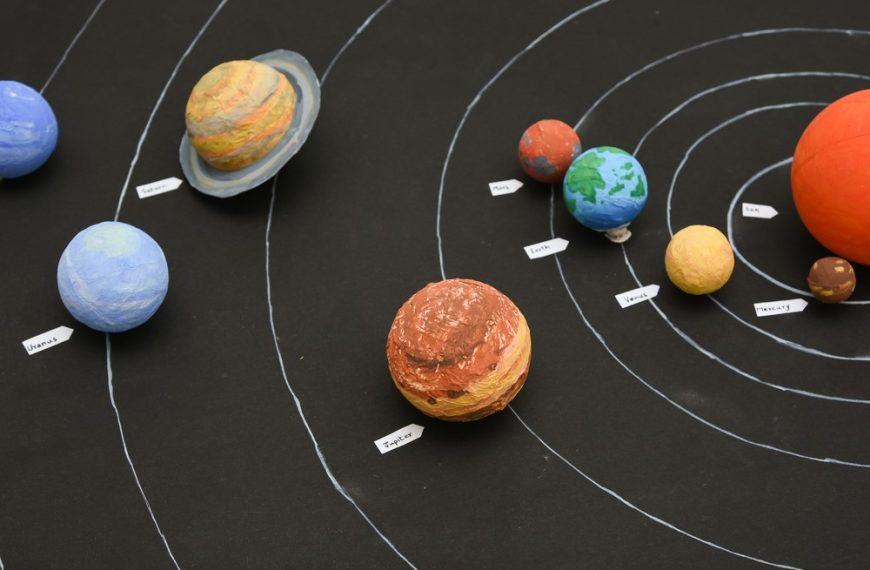For many children, the journey into space exploration begins with realising that we live on Earth. Soon after they come to terms with this, they are introduced to terms like the solar system, galaxies, stars, and the Milky Way. While space exploration is fascinating, introducing it in an overwhelming or dull way can make kids lose interest in its wonders. So, how can you make learning about the solar system fun and engaging for your child?
A fun way to inspire their love for space is by creating a kids’ solar system project using simple arts and crafts supplies. This hands-on activity lets kids visualise or express what they have learned about the solar system through a space project.
This blog will explore fun solar system project ideas, tips on making the space project fun and engaging, and list common supplies needed to complete the space project.
Kids Solar System Project Ideas

Fostering a comprehension of difficult scientific topics is sometimes tricky in the field of education. But when these ideas are conveyed in a fun and practical way, learning is made not just simpler but also incredibly pleasurable. Our solar system is one such subject of curiosity that has captured the interest of generations. A science project for kids may be a great way to introduce young minds to the mysteries of space. This blog will explore inspiring solar system project ideas, go through step-by-step instructions for making a science project for kids, and highlight the supplies needed to start on this educational trip.
Unveiling The Solar System Project For Kids
Working with your child on a space project is a great way to nurture their curiosity and grow their love for exploring the world—and the universe beyond! You don’t have to wait for the next solar system project for school to dive in. If they are fascinated by space, you could take it further by building a model spacecraft, designing experiments to test their space-related ideas, or even using fun space facts to add excitement to pretend play. Here are some fantastic space project ideas:
- Model Making Extravaganza
- Edible Solar System
- Planet Fact Cards-
- Orrery Construction
Building a physical solar system model is a tried-and-true but efficient way of teaching children about the positioning of the planets and their orbits. To precisely depict each planet, you may choose materials like foam sheets or styrofoam balls. Don’t forget to paint them in hues corresponding to the planets’ real-life appearance. As they put the planets in the correct placements, students may use this activity as a terrific approach to help them comprehend the idea of scale.
One of the ingenious ways to engage youngsters in learning about space is by making an edible solar system. To represent the planets, use various-sized fruits, such as oranges, grapes, and blueberries. You may mimic the alignment of the solar system by placing these fruits on wooden skewers in a precise pattern. They learn about the arrangement of the planets while also getting hands-on experience building their small universe.
You can combine creativity with study by creating planet fact cards. Give each youngster a planet and instruct them to learn about their given heavenly body. Then, using art tools, they may make aesthetically appealing fact cards. By discussing and presenting their results, individuals will learn more about the planet they were given and the entire solar system.
Building a basic orrery might be an interesting space project. An orrery is a mechanical model that depicts how heavenly bodies move about one another. Encourage children to create an orrery that faithfully depicts the planets’ orbits around the sun using items like paper, cardboard, and toothpicks.
Tips on Creating a Perfect Solar System Project for Kids
Getting youngsters started on a space exploration project trip requires a methodical strategy combining teaching and creativity. Here are a few tips for creating an engaging space exploration project for kids:
- Research and Learning
- Invest Time in Selecting the Right Material
- Focus on Designing and Planning
- Share the Project With the World
Before starting the project, introduce the fundamental elements of the solar system, such as the sun, planets, moons, and other celestial bodies, to your kids. Outline the position of the planets about the sun and briefly discuss their special qualities. Age-appropriate literature, internet sources, and films can all be used to communicate this knowledge successfully.
You need to choose the right materials to build a successful solar system project for kids. The material you use greatly influences the success of the project. Collect solar system project materials like styrofoam balls, foam sheets, wooden skewers, paints, painting tools, cardboard, toothpicks, and a variety of fruits, depending on the project concept you’ve chosen.
Support the children as they create their solar system project. Encourage children to come up with inventive methods to display their knowledge for projects like the edible solar system or planet fact cards.
Encourage the children to show their work to their friends, parents, or teachers after the projects are finished. This action increases their self-assurance and solidifies their comprehension of the parts of the solar system and how they relate to one another.
Essential Solar System Project Materials
A project using the solar system must have the right ingredients to succeed. Depending on the project you choose, you’ll need a range of supplies to make the universe come to life. The necessary solar system project supplies for numerous project ideas are listed below:
- Styrofoam balls (assorted sizes)
- Foam sheets
- Paints (acrylic or poster paints)
- Paintbrushes
- Wooden dowels or skewers
- Craft glue
- Coloured construction paper or cardstock
- Markers or coloured pencils
- Reference books or online sources
- Glue or double-sided tape
- Markers or coloured pencils
- Small beads (to represent planets)
- Toothpicks or wire (for connecting planets to the central axis)
Summing Up
It’s rewarding to teach kids the marvels of science through practical projects. A solar system project for kids fosters children’s creativity, critical thinking, and curiosity while also teaching them about the celestial bodies that make up our universe. You may go on a voyage of discovery with young minds by following the instructions in this article and using the appropriate resources, inspiring a lifetime of enthusiasm for exploration and knowledge. Additionally, you can check out our blog, Strategies For Enhancing Children’s Learning Skills, for more ideas on how to enhance your little one’s learning skills.
For more information on things related to your little one’s development, growth, health and nutrition, check out EuroKids Blogs. Don’t forget to check out EuroKids Preschools, where your little one can embark on a joyful and enriching learning adventure with the perfect start!
















